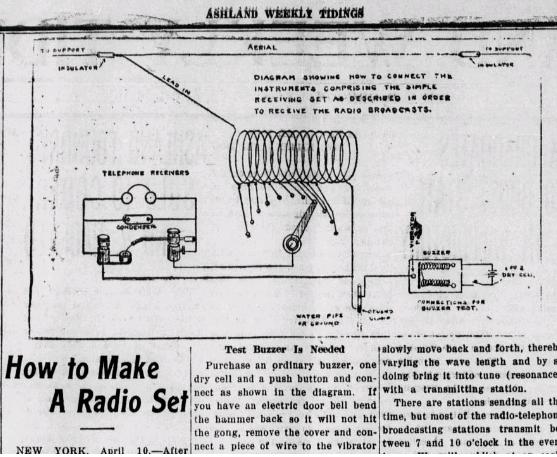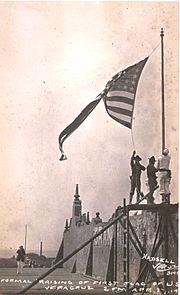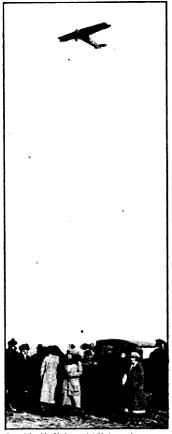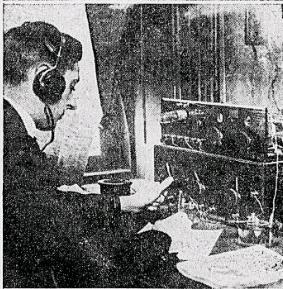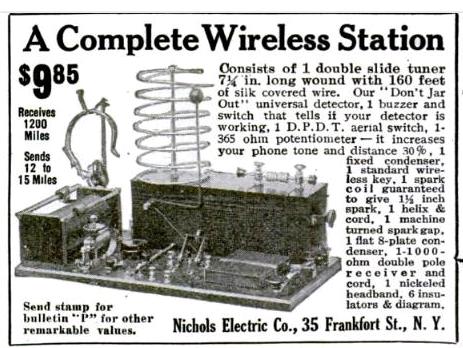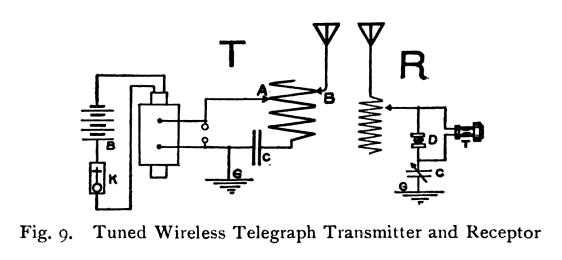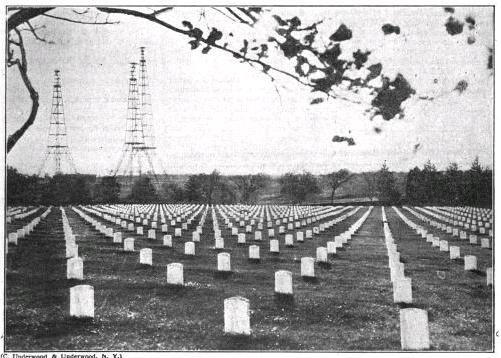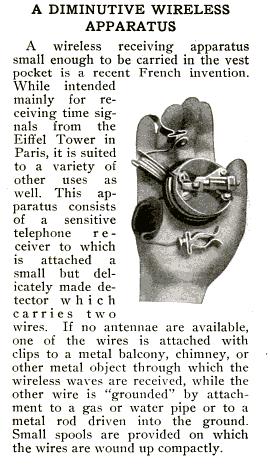One interesting footnote in Radio History can be found in Alfred Powell Morgan’s 1914 book Wireless Telegraph Construction for Amateurs. This is the Flame Audion detector, shown below:
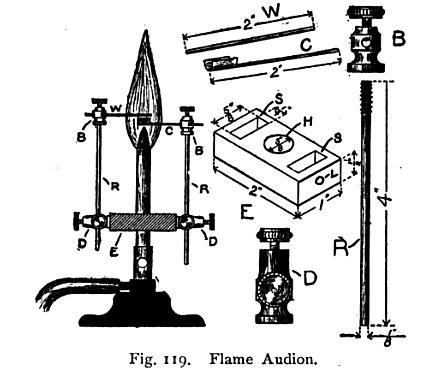
Morgan describes it thus:
The simple but sensitive form of detector illustrated in Fig. 119 is not of practical value for commercial work, but is very interesting as the progenitor of the audion, and provides a good field for amateur investigation. Its only drawback is that the gas flame is very difficult to keep steady and every flicker registers as a sound in the telephone receivers.
A Bunsen burner using coal gas furnishes the flame, and a salt of an alkaline metal heated in the flame, the ions. The hydroxides of csesium, potassium and sodium give the best results in the order named.
The salt is contained in a piece of trough-shaped platinum foil, about 3/8 inch long and 1/16 inch wide. This trough is made the cathode or negative of the telephone circuit and placed in the outer oxidizing flame just above its juncture with the interior reducing flame and must be kept incandescent. The upper electrode .or anode is a piece of platinum wire about 1/16 inch above the trough.
The arrangement and construction of the detector is clearly indicated by the drawing so that it is unnecessary to go into details. The block, E which fits on the tube of the Bunsen burner, is made of fiber. Two double binding posts, D, are fastened to E to support the rods, R, which are fitted at the tops with binding posts, B, into which the electrodes may be clamped.
Twelve dry cells are connected with a multiple point switch so that an electromotive force of 6-18 volts, varying in steps of one cell at a time, may be secured. The flame is best provided with a mica chimney to protect it from drafts. By keeping plenty of salt in the trough and carefully adjusting the voltage, this detector may be made marvelously sensitive.
This type of detector was the inspiration for the Audion tube. The effect was discovered by the Audion’s inventor, Dr. Lee DeForest, in 1903. DeForest writes in 1947 about this discovery:
I used a Bunsen burner, locating within the flame two platinum electrodes, one of which was connected through the telephone receiver to a dry battery, and thence to the other platinum electode. I enriched the flame with sodium, or common salt.
I then found that when the electrodes were properly located in the gas flame the signals from my spark transmitter were distinctly audible in the telephone receiver. I made countless experiments with this phenomenon; and to prove definitely that the effect was not acoustic but electrical, I connected one of the flame electrodes to my antenna, the other to the ground, and actually obtained wireless signals from ships in New York Harbor.
Radio-Craft, January, 1947

DeForest’s Diagram of the Flame Audion Circuit
DeForest applied for a patent in 1905, and was issued U.S. Patent 979275 for the flame detector in 1910.
DeForest wrote about the flame audion himself a number of times. For example, see his articles in Western Electrician, November 3, 1906; the February, 1916, edition of Popular Mechanics; the January, 1947, issue of Radio-Craft.
He wrote a more complete scientific paper which was published in the Transactions of the American Institute of Electrical Engineers in 1906.
DeForest is occasionally criticized for not really understanding what was going on inside the triode. This criticism isn’t really fair. It was later discoverd that the Audion acted as an amplifier. It was quite imperfect as an amplifying tube, because it did not have a complete vacuum. But from reading DeForest’s writings, it is clear that he never intended to invent an amplifying tube. He was working on a detector, and the ionized gas within the tube (which wouldn’t have been there if it had been a true vacuum tube) was responsible for this capability. The amplifying ability was, indeed, a lucky accidental discovery. But particularly looking over the 1906 paper, it’s clear that DeForest was an extremely gifted engineer, and he is worthy of the credit he has received for his advancement of radio in the early years.
It seems to me that students looking for an interesting science fair project might be inspired by DeForest’s work. It combines both fire and electricity. Since it had no reasonable commercial use in the early 1900’s, there was no good reason for scientists to pursue it. But it seems to me that interesting things might be going on inside that flame.
DeForest used platinum wire, which is rather expensive. On the other hand, the cost isn’t entirely out of line. For about $20, you can buy enough Platinum Wire to construct the detector. Platinum foil would be prohibitively expensive, but there doesn’t seem to be any reason why the salt needs to be contained by the platinum. It seems to me that two platinum wire electrodes could be used. And while DeForest used platinum, there doesn’t seem to be any evidence that he experimented with other metals. Would copper perform the same function?
to construct the detector. Platinum foil would be prohibitively expensive, but there doesn’t seem to be any reason why the salt needs to be contained by the platinum. It seems to me that two platinum wire electrodes could be used. And while DeForest used platinum, there doesn’t seem to be any evidence that he experimented with other metals. Would copper perform the same function?
The flame audion was used as a radio detector by DeForest. But earlier scientists had shown that the flame would conduct electricity, a fact that is obvious from the flow of current through the gap. What flames provide better conductivity? Salt is added presumably because it ionizes better than just the fuel and air alone. It would be a relatively simple matter to measure the conductivity of different ionized materials. Variations in the flame can be heard in the headphones, so for the purpose of making a sensitive radio detector, it’s probably necessary to have a very constant flame. But for many applications, it seems to me that an ordinary candle would suffice.
(For more science project ideas, see my review of the book Radio Science for the Radio Amateur.)
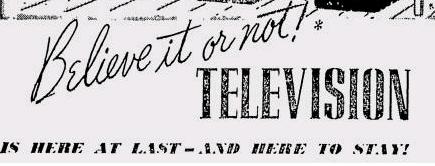 Seventy-five years ago, television looked like it was ready to take off, but it didn’t become a widespread reality until after the war. There had been experimental transmissions for a few decades, and by 1939, sets were being advertised. April 30, 1939, marks the day from which TV has been continually broadcast in the United States.
Seventy-five years ago, television looked like it was ready to take off, but it didn’t become a widespread reality until after the war. There had been experimental transmissions for a few decades, and by 1939, sets were being advertised. April 30, 1939, marks the day from which TV has been continually broadcast in the United States.
